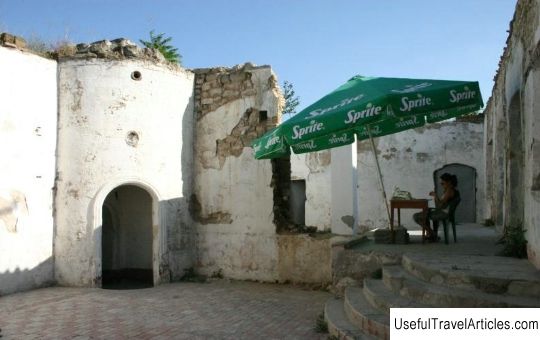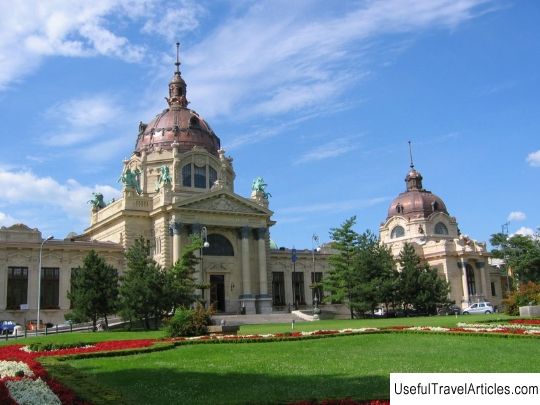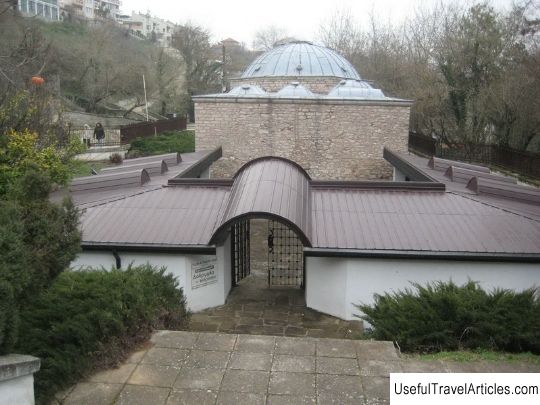Turkish baths description and photo - Crimea: Evpatoria
Rating: 8,4/10 (449 votes) 
Turkish baths description and photos - Crimea: Evpatoria. Detailed information about the attraction. Description, photos and a map showing the nearest significant objects. Photo and descriptionTurkish baths are a monument of architecture and urban planning, which are listed in the List of monuments of national and local importance. The Turkish bath is one of the unique attractions of Evpatoria and is of interest and because it has existed since medieval times. Gozlevskaya bathhouse was built by an unknown builder and has an architecture with simple forms, distinguished by special grace. There was a high dome above the dressing room. The Turkish bath in Yevpatoria is very similar in its architectural appearance to the Suleiman bath in the Cafe. The exact time of the construction of the baths is still unknown. This date is considered to be the 16th century, which is most likely based on architectural techniques. Turkish baths were used for their intended purpose until 1987. They are first encountered on the plan of Yevpatoria in 1895 under No. 21. Turkish baths consist of women's and men's departments, located parallel to each other with adjoining rooms for heating and water supply. On the edge of the tiled roof, above the entrance doors, there were wooden sculptures depicting a man and a woman (late 18th century). Today, female sculpture is exhibited in the local history museum. At the entrance to the bathhouse there is a cloakroom (djemkon), further, behind low arched doors, there is a large room (sogukluk). In the men's room, in the very center, there was a so-called "stone - navel" (geybek - tash) - a square podium measuring 1.5 x 1.5 m and 0.5 m high. The top of the stone is lined with slabs made of white marble. This hollow stone heated by hot air, served as a massage table. Low benches along the walls have been preserved in both rooms. Water was supplied through lead pipes into small bowls of white marble. The massage rooms were bordered by small sikalik steam rooms and washing rooms, which also had marble bowls and benches. The walls of the building are quite thick, they are made of limestone on hydraulic fluid, which is known as "Khorasan". These rooms are covered with spherical domes with round holes through which light entered, and natural ventilation took place. On the north side of the baths, there is a fairly large room, which is a reservoir for storing water and capturing, from which lead pipes, through the wall of the baths, entered the washing room. In Gozlev in the Middle Ages, the baths were supplied with water through underground galleries (kyarises). The local history museum displays ceramic water pipes from the Middle Ages, which were found on Demysheva Street in one of the kyarises. Serious research of the baths has never been carried out, since this is a rather expensive event. Baths of this type are the only ones preserved on the territory of the European part of the former Soviet Union.      We also recommend reading Chion-in Temple description and photos - Japan: Kyoto Topic: Turkish baths description and photo - Crimea: Evpatoria. |




